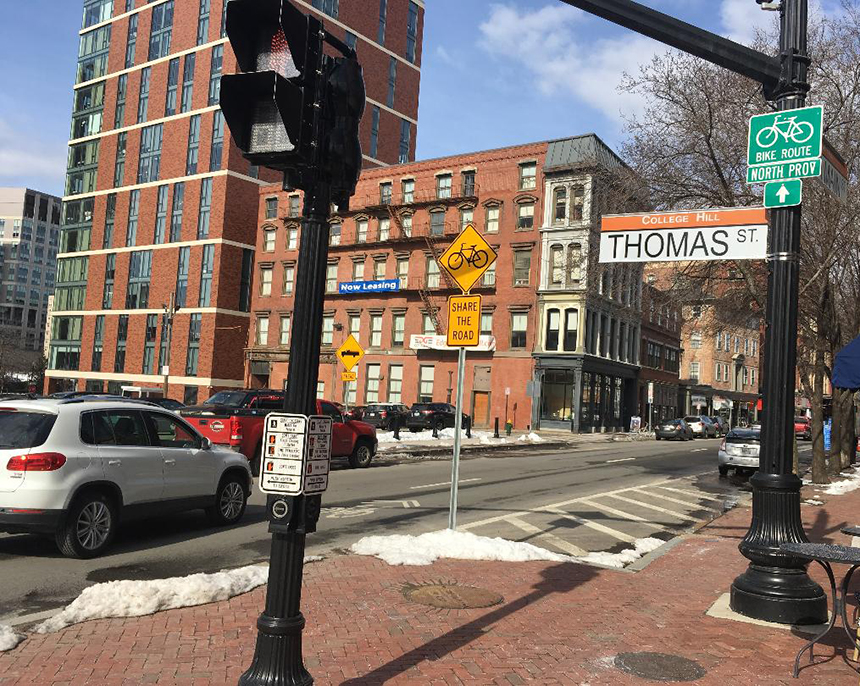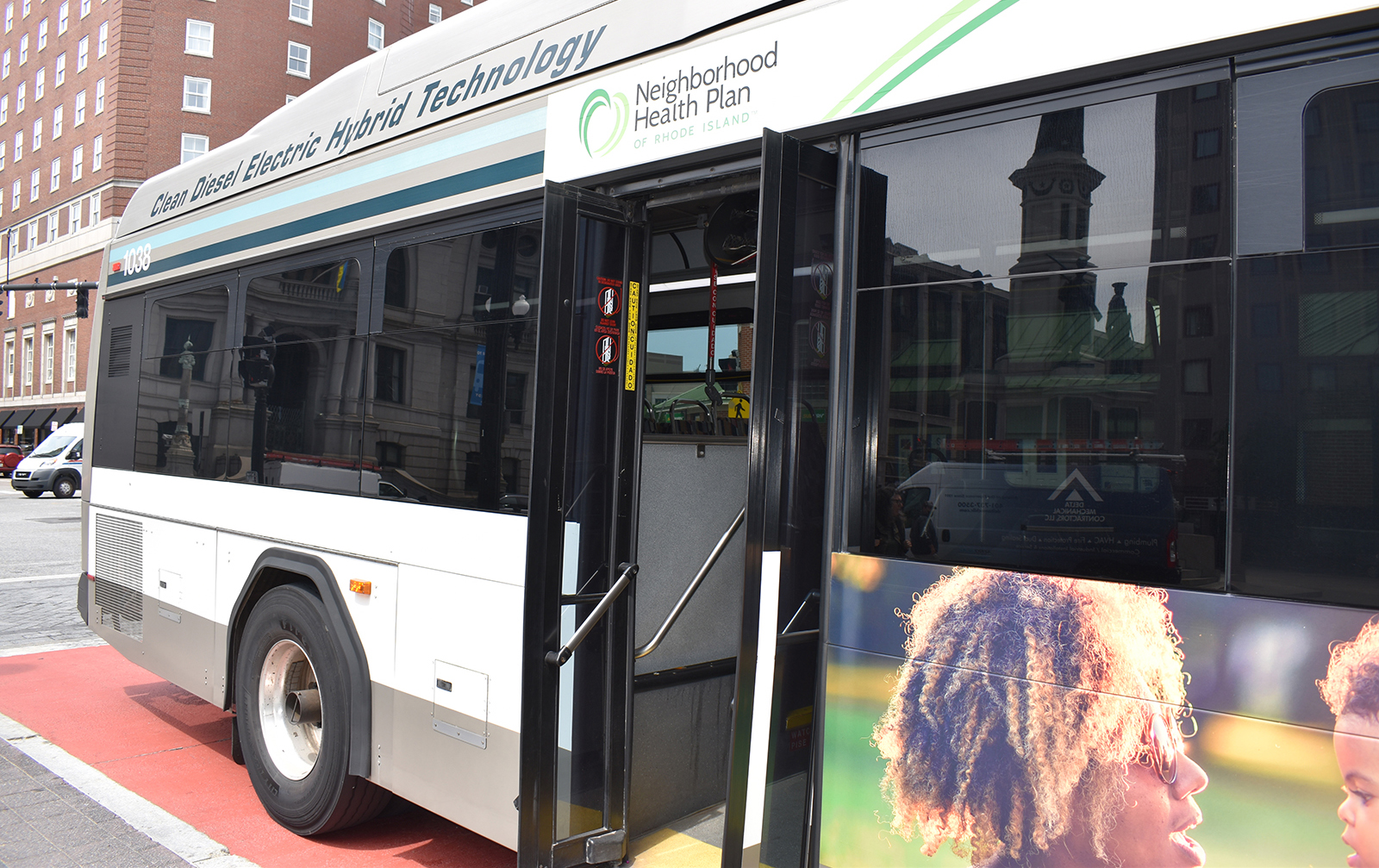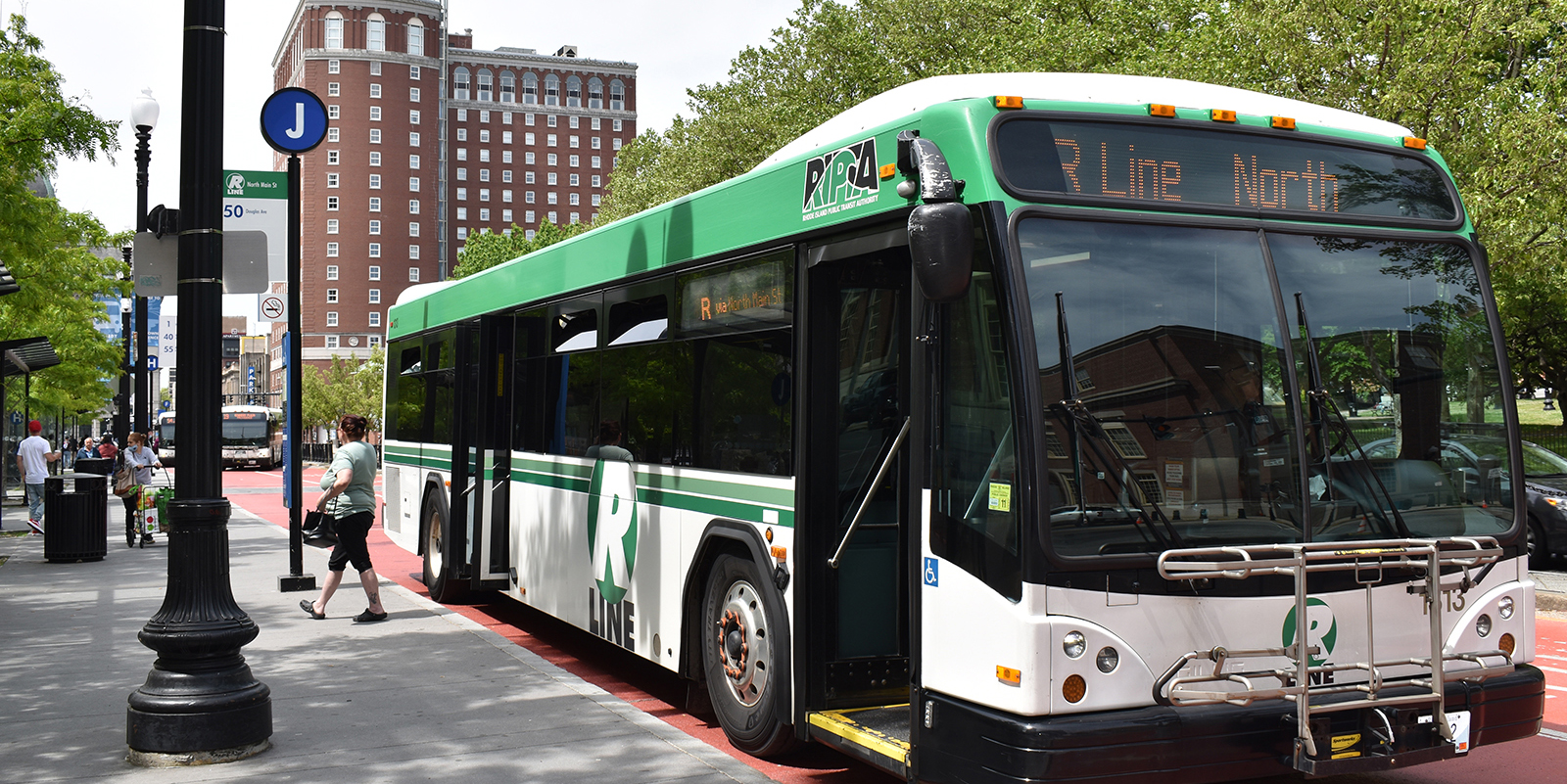State and RIDOT’s Tunnel Vision Limits Bike Mobility
February 22, 2019
As principal planners for the Rhode Island Division of Statewide Planning, Lindsey Langenburg and Drew Pflaumer spent nearly a year and a half working on the state’s Bicycle Mobility Plan. Some seven months into their work, however, they said they knew their efforts were in trouble, after a longtime Division of Statewide Planning staffer told them they work for the executive branch, not the public.
Pflaumer said state “logic” behind its unwillingness to do projects — such as putting bicycle lanes on the new Pine Street Bridge in Pawtucket — stems from concerns that they don’t connect to anything else, at least not immediately.
“If that’s the reasoning behind every single project, then you’ll never have any things to connect to,” he said, noting that transportation work is never going to be done all at once.
The Bicycle Mobility Plan “seeks to safely and efficiently connect people and places so that bicycling in the Ocean State becomes safe and fun for all ages.”
The 113-page draft document lists eight goals: connect and expand the state’s bicycling network; integrate bicycling with transit and other modes of transportation; develop stronger statewide bicycling policies; promote equity in bicycle planning and funding; increase bicycle safety with policies and programs; leverage bicycling to promote economic development; improve public health through bicycling; and promote bicycle transportation for Rhode Island employees.
The bike plan is expected to be voted on by the State Planning Council this fall.
Neither Langenburg nor Pflaumer believe bicycling in Rhode Island is a safe option.
“Before I moved here, I was a daily bike commuter in Brooklyn,” said Langenburg, a Michigan native who worked as an urban designer for the New York City Department of Transportation for more than a year. “In Brooklyn I got hit by a car and rode my bike to work the next week. I’m willing to bike there after getting hit by a car. I’m not willing to bike in Rhode Island. There are plenty of people that move here or have been here who would be happy to bike if it felt like a safe option.”
The bike plan, at least to those in charge of writing it, was about a connected transportation network. Pflaumer said those behind the plan were “really excited about a transportation focus rather than a fun thing to ride your bike on on the weekends in the woods.”
“As it turns out, if you want people to ride a bike for transportation you have to make it go from where people live to where they need to go … like schools and grocery stores. I was a bike commuter here for little over a year and it was miserable every day,” the Providence resident said. “Nobody would acknowledge that you could ride your bike for fun on the street and you could ride your bike to work on a bike path.”
ecoRI News spoke with the two planners Feb. 19 at a coffee shop in Pawtucket to talk about what it would take to make Rhode Island a leader in alternative modes of transportation and what such an endeavor would look like.
Neither of the former Division of Statewide Planning employees sees much hope that Rhode Island will significantly or even adequately improve bicycle and pedestrian transportation at the state level under current leadership.
“We were really pushing the idea of instead of fix it first you can fix it better,” Langenburg said. “We’re not saying let our roads and bridges crumble. We’re saying when you fix something you can fix it better. That’s an opportunity to do something different that aligns with all of our other goals as a state. I completely understand that it is very important to reach a state of good repair, but there is absolutely nothing that says we have to do a one-to-one repair.”
They said the biggest obstacle to improving transportation for those not in cars is the state’s attitude, specifically that of the Rhode Island Department of Transportation (RIDOT).
Just last month RIDOT requested a major amendment to Rhode Island’s 10-year Transportation Improvement Program that included a substantial funding cut, about 33 percent, to bicycle and pedestrian projects in the Transportation Alternatives Program. The request would have delayed, reduced, and eliminated nearly $28 million in funding to some three dozen alternative transportation projects statewide.
RIDOT withdrew its amendment on Feb. 22, noting that an unexpected influx of nearly $70 million in federal money allocated to Rhode Island though the Transportation, Housing and Urban Development, and Related Agencies Appropriations Act of 2019 negated the request. The Transportation Advisory Committee public hearings on the RIDOT amendment scheduled for Feb. 25 and 28 have been canceled.
During the drafting of the Bicycle Mobility Plan, Langenburg and Pflaumer said RIDOT officials would often argue that this bike-lane proposal or that pedestrian project would be “impossible” to do.
Among the projects RIDOT considered “literally impossible,” according to both Langenburg and Pflaumer, would be the addition of a path for pedestrians and bicyclists on the Pell Bridge — a plan the Rhode Island Turnpike and Bridge Authority has determined to be feasible.
“It’s not impossible,” Langenburg said. “You just don’t want to do it.”
They noted that last spring a RIDOT official told them that Rhode Island spends too much money on bicycle and pedestrian projects. Less than 3 percent of Rhode Island’s transportation budget supports bicycle and pedestrian infrastructure.

Pflaumer and Langenburg noted that under RIDOT criteria spray-painted sharrows, which are simply a reminder to motorists that they should share the road with bicyclists, and signed bike routes, such as North Main Street in Providence, are considered bicycle facilities.
“It’s totally ludicrous, because obviously a four-lane divided highway with parking on both sides is not a bicycle facility,” Pflaumer said.
The Indiana native noted that if signed bicycle routes, sharrows, and recreational facilities, such as the state’s major bike paths, were stripped away, Rhode Island would be left with about 15 miles of bicycle facilities for the entire state.
“Which is just asinine, obviously,” Langenburg said. “And your tiny sign doesn’t change that. They’re just interested in the press release-level stuff so they can say on their RIDOT-produced bicycle map we’ve got hundreds of miles of bicycle facilities, but when it’s a tiny sign on a highway, no you don’t.”
The state’s attitude about alternative transportation, however, isn’t limited to RIDOT. Langenburg and Pflaumer said that in late fall 2017 a Transportation Advisory Committee member told them that Rhode Island is too small to do bicycle and pedestrian projects.
Langenburg believes just the opposite.
“As the smallest state, Rhode Island has incredible opportunity to become a leader in safe and sustainable active transportation — where better to bike or walk than a state that’s 37 miles wide and 48 miles long?” the Pawtucket resident asked. “Unfortunately, we seem to be moving in the opposite direction.”
Langenburg and Pflaumer noted that if Rhode Island was serious about alternative transportation the state would adopt an engineering directive like the one the Massachusetts Department of Transportation implemented more than four years ago. MassDOT’s directive introduced new controlling criteria for pedestrian and bicycle accommodation that is used together with controlling criteria for roadways and bridges.
Langenburg said the teeth behind such a directive — unlike Rhode Island’s complete streets law — is the required submission of a design exception report, which is mandatory for permitting a project that doesn’t include bicycle and pedestrian facilities. She noted that projects aren’t allowed to advance beyond 25 percent design before being reviewed by a complete streets engineer.
In Rhode Island, though, she said “the process is more like get everything done as quickly as possible, with as little trouble as possible. That translates to as little thought as possible.”
“When municipalities are presented 90 percent plans that don’t include multimodal accommodations, the planners’ options are to either sign off and get the project completed as is — typically a one-to-one replacement — or to delay the project by at least a year and receive loads of backlash for not getting things done. It’s an assembly line of bad, thoughtless projects.”




though its depressing reading, its not beyond hope. There are bike advocates in the RI Bicycle Coalition, Bike Newport, the Woonasquatucket River Watershed Association and other community groups actively working to promote bicycling and now the Environment Council, primarily interested in reducing greenhouse gas emissions is starting to see the potential of these most truly "zero-emission" vehicles. And Providence has a Bike/Pedestrian Advisory Committee and a Planning Department that can be allies at an official level.
I’ll also note that RIDOT is not the only obstacle. There is also Joe Paolino and his allies downtown suing to stop transit and bike improvements there, in part because it might make it a little harder to get in and out of the nearby garages (those poor dears!) And Citizens Bank moving much of its workforce out of the metro area to the woods where bike and transit access is virtually non-existent. And some towns that blocked bike path expansion – Johnston, Smithfield, North Kingstown come to mind. And motorists who feel entitled to speed – recall the push-back from incensed drivers caught speeding at least 11 mph over the speed limit in school zones. Real enforcement is one of the conditions needed to make biking safer.
Bu lots of us will keep trying and I hope more will help.
I want to note that an opportunity to comment on RIDOT leadership is Peter Alviti’s Senate re-confirmation hearing, now scheduled Thursday, Feb 28 at the "rise" (ca 4pm)
This story was depressing in 2019 and it’s just as depressing in 2023…